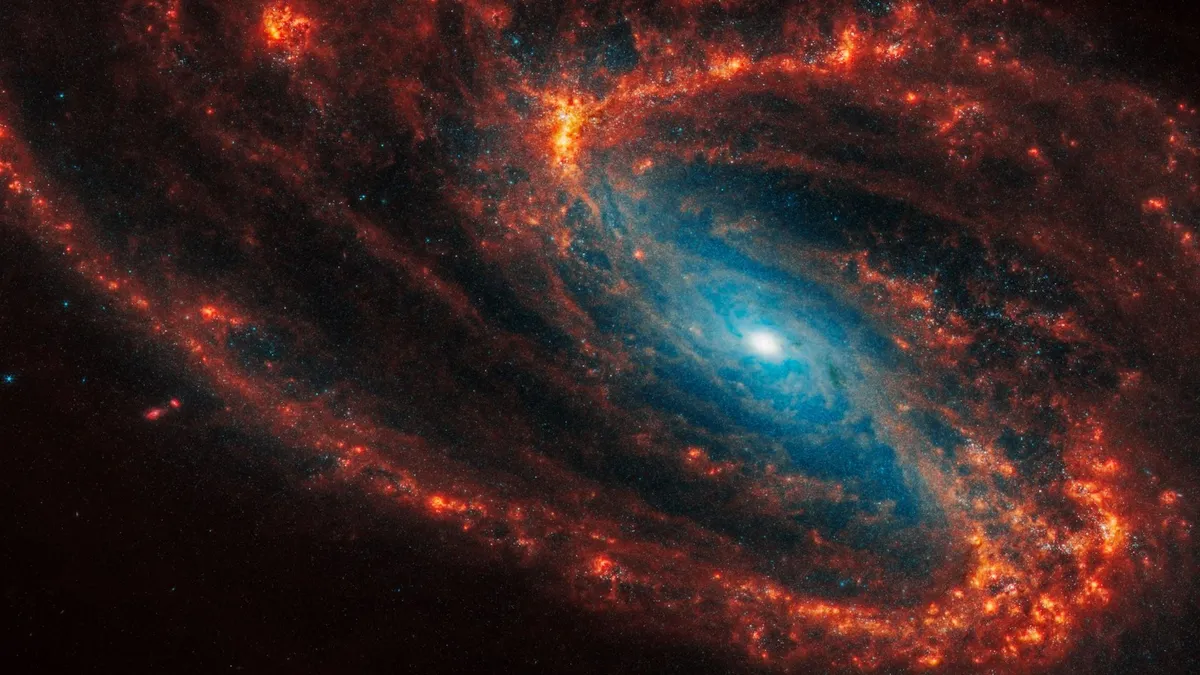
A team of astronomers has made a groundbreaking discovery of a gigantic cosmic contrail in the spiral galaxy NGC 3627, located approximately 31 million light-years from our solar system in the constellation Leo. This remarkable trail of gas and dust may have originated from a massive black hole passing through the galaxy, although researchers acknowledge other potential causes, as reported in a recent study.
The contrail identified in NGC 3627 is notable for its exceptional clarity and size, making it the most distinctly defined contrail ever recorded. According to Mengke Zhao, a doctoral student in astronomy at Nanjing University in China and co-author of the study, the contrail stretches roughly 20,000 light-years in length, which is about one-fifth the diameter of the entire Milky Way galaxy. Its width is strikingly narrow, measuring only 650 light-years.
The discovery of the galactic contrail was made possible through the analysis of data from the Physics at High Angular Resolution of Nearby Galaxies (PHANGS) survey. This comprehensive survey utilizes a variety of telescopes, including the James Webb Space Telescope (JWST) and the Atacama Large Millimeter/submillimeter Array (ALMA) located in Chile. The primary objective of PHANGS is to understand how gas and star formation influence galaxy structure and evolution.
Data from the PHANGS-JWST revealed that the contrail contains dust particles, while the PHANGS-ALMA data indicated it is also abundant in carbon monoxide. This faint, linear tail of gas and dust appears distinct from NGC 3627's two prominent spiral arms, highlighting its unique nature.
Based on a theoretical model co-developed by Guang-Xing Li in 2021, Zhao and Li propose that the contrail was likely created by a massive compact object, such as a black hole. The model suggests that as this object traversed the galactic disk, it expelled gas, leaving behind the contrail that marks its passage.
The turbulence observed within the contrail supports this hypothesis. Researchers estimate that the compact object responsible for the contrail has a mass of approximately 10 million solar masses and was traveling at an astonishing speed of 186 miles per second (300 kilometers per second)—50% faster than the current speed record for spacecraft, held by the Parker Solar Probe.
Additional calculations reveal that the contrail formed around 20 million years ago, which is relatively recent in the grand timeline of the universe, especially considering the Milky Way is over 13 billion years old. While the study suggests the object could indeed be a massive black hole, the researchers also entertain the possibility that it could be the dense nucleus of a dwarf galaxy. Zhao notes that, with current data, distinguishing between these two scenarios is challenging.
Detecting the compact object itself poses a significant challenge; if it is a dim dwarf galaxy, it would be difficult to observe at such a distance. However, the researchers speculate that future deep optical surveys or high-resolution ALMA observations might eventually reveal a counterpart. They also propose that enigmatic sources known as little red dots could potentially be involved, though the exact mechanisms remain to be explored.
Zhao and Li intend to continue their research on the contrail and will examine PHANGS observations for additional examples of similar streams. Understanding the evolution of these contrails and their prevalence could provide valuable insights into the population of massive dark objects moving through galactic disks, Zhao concludes.